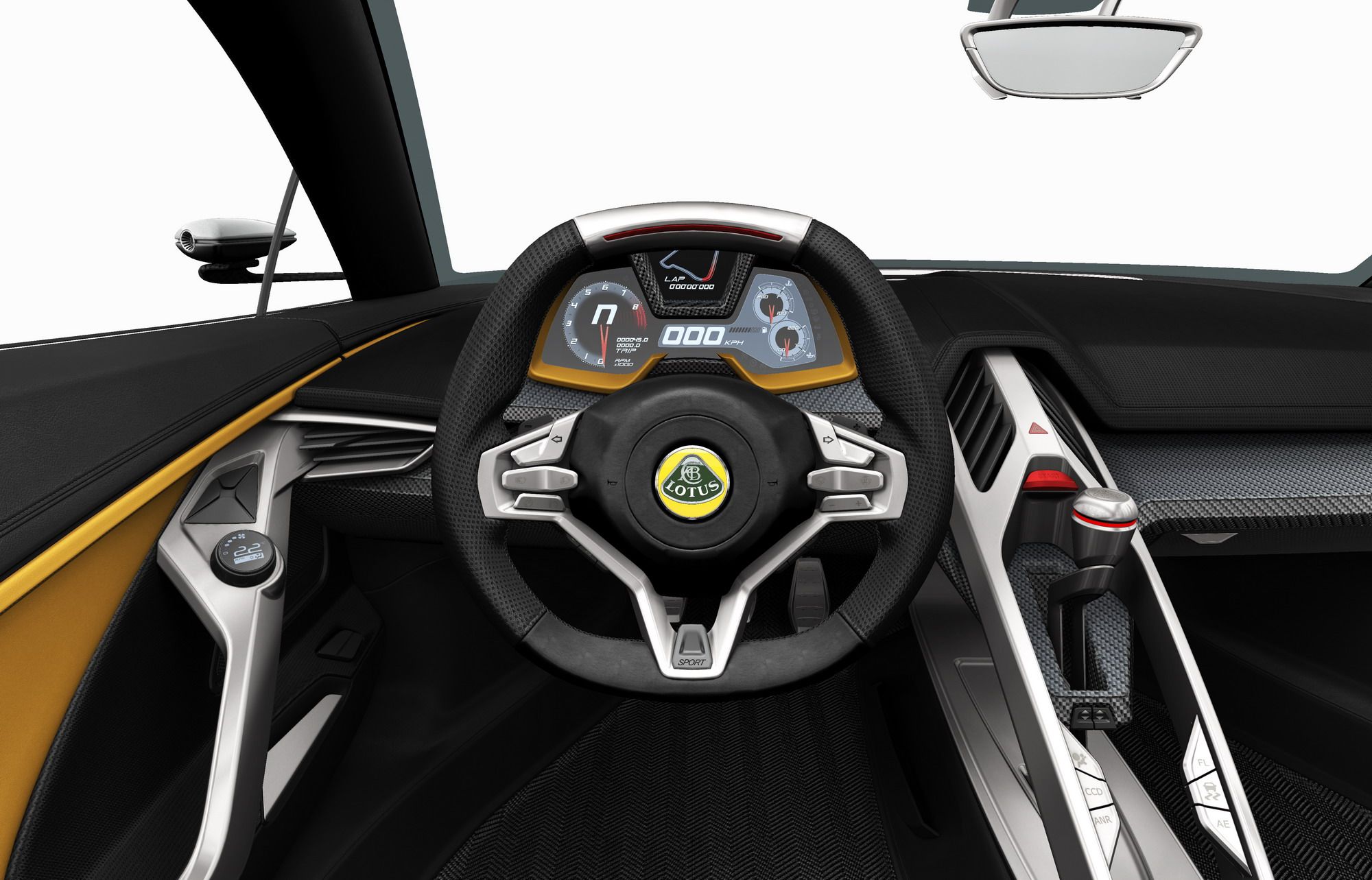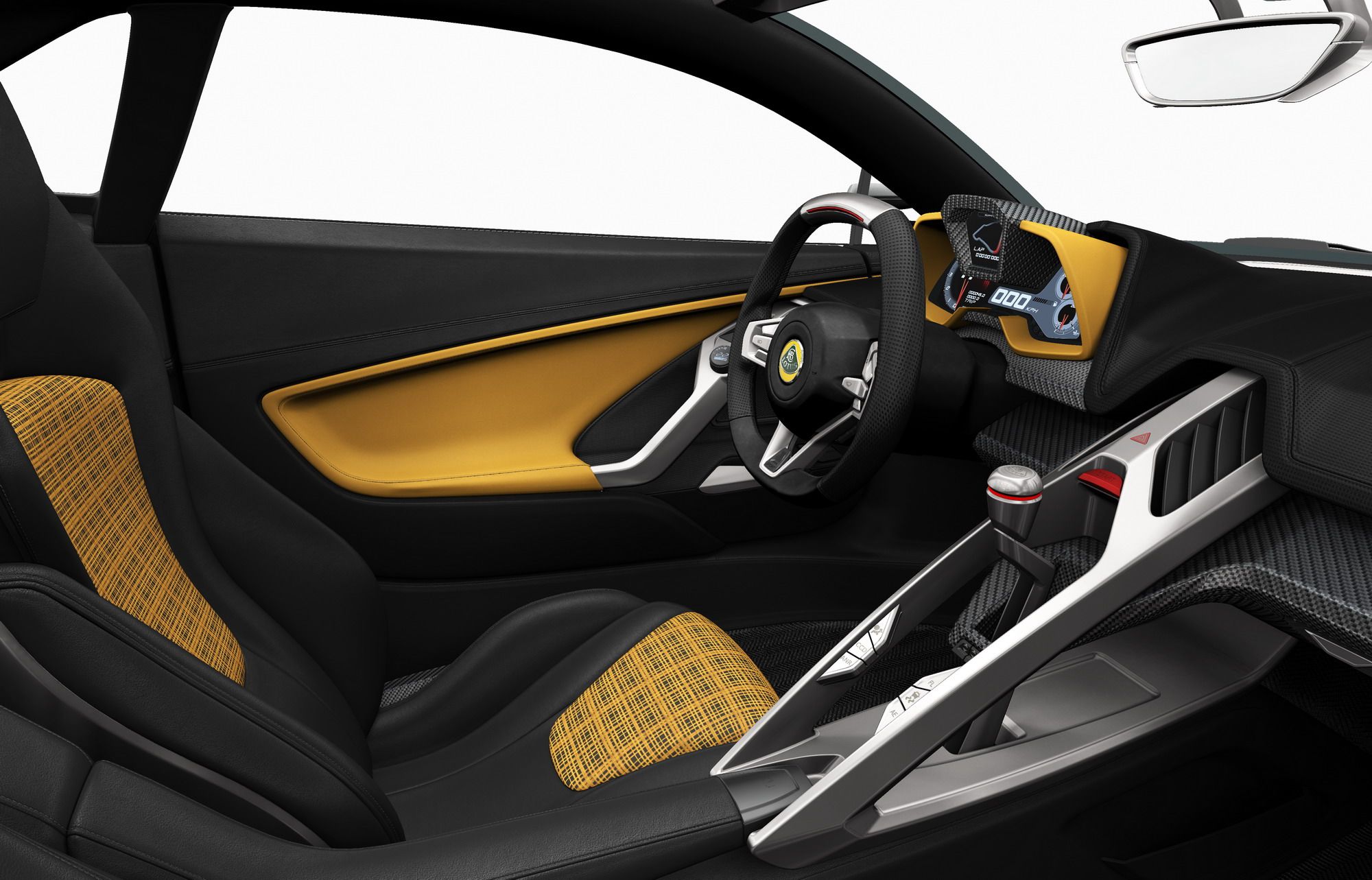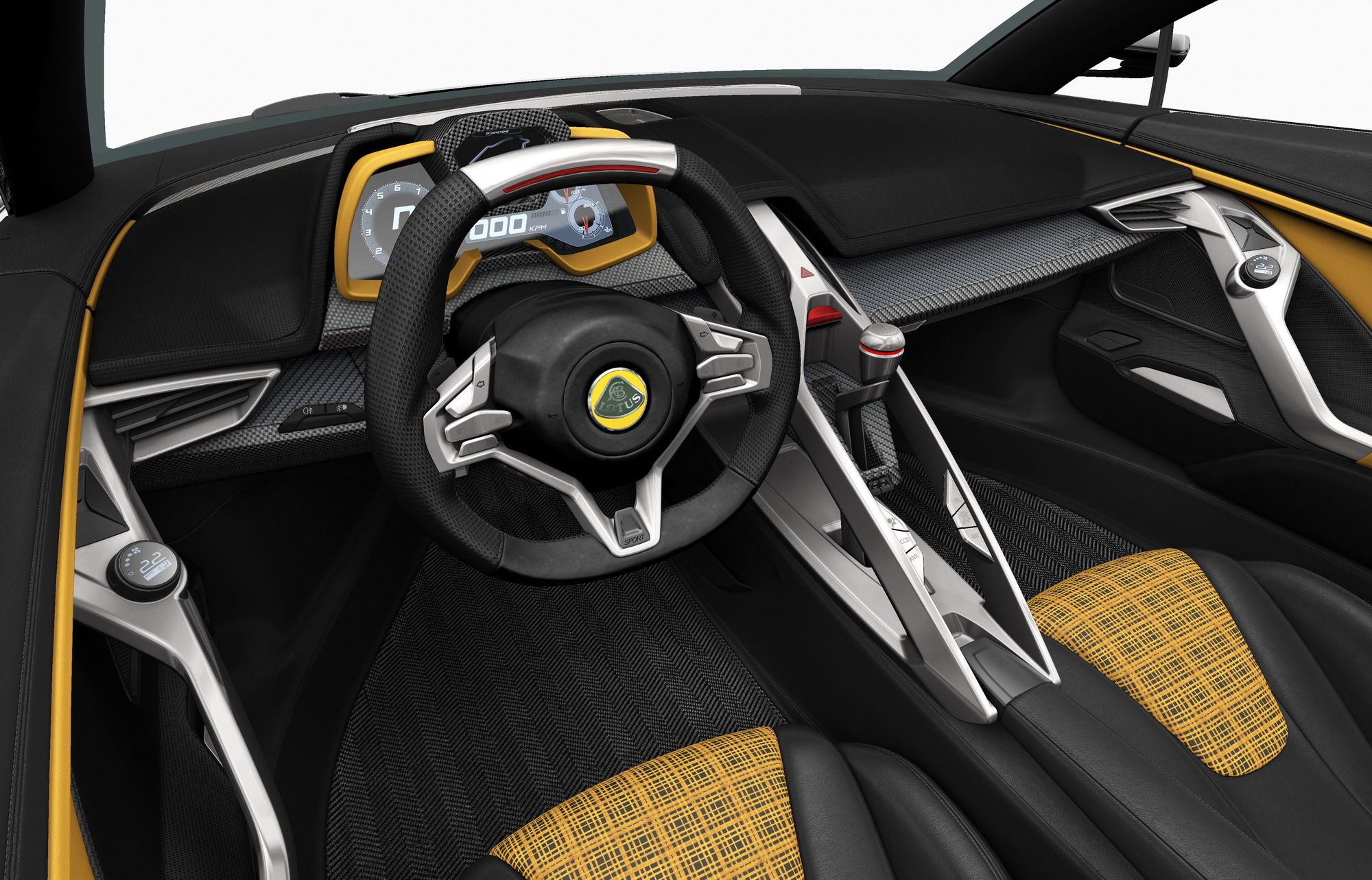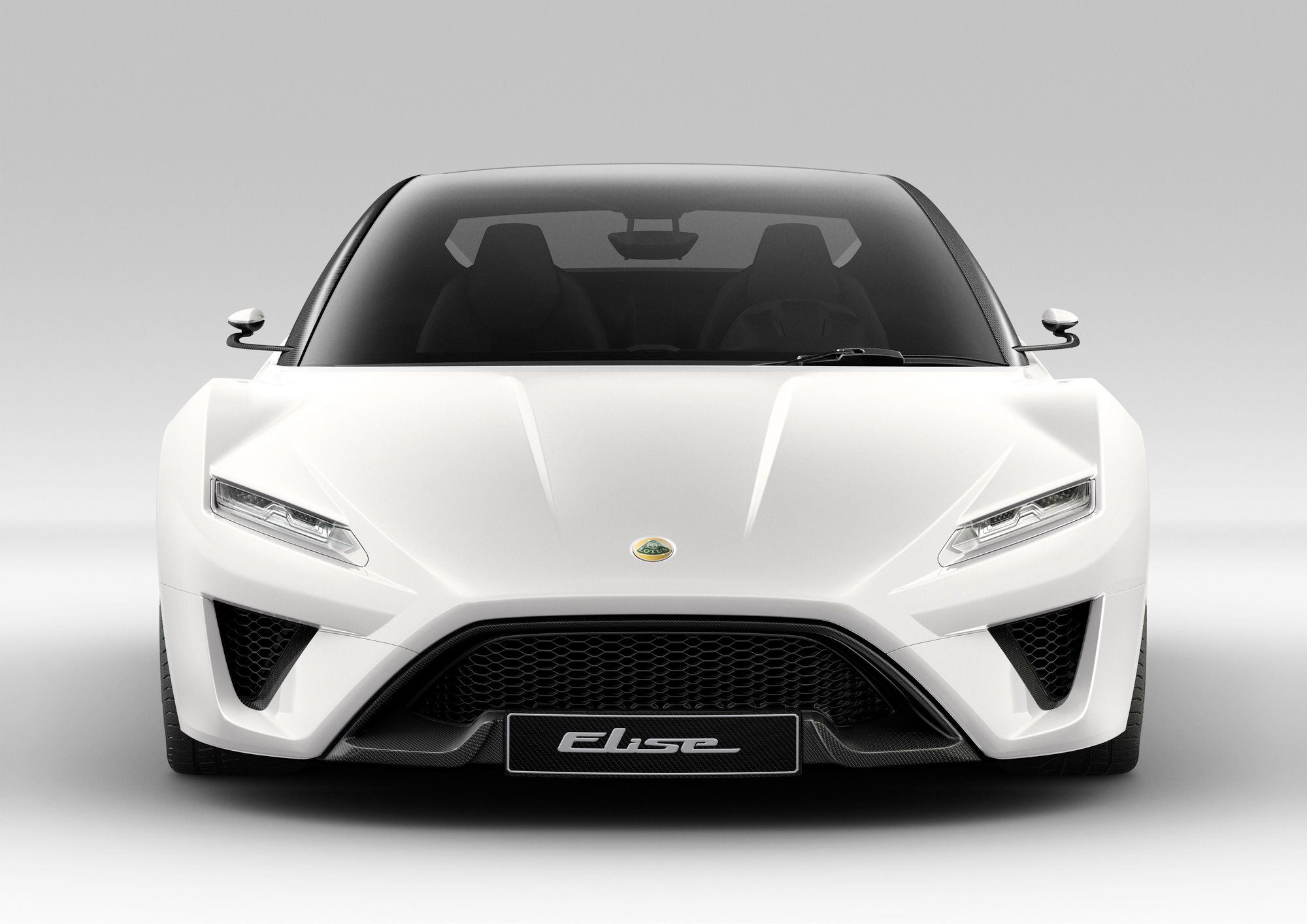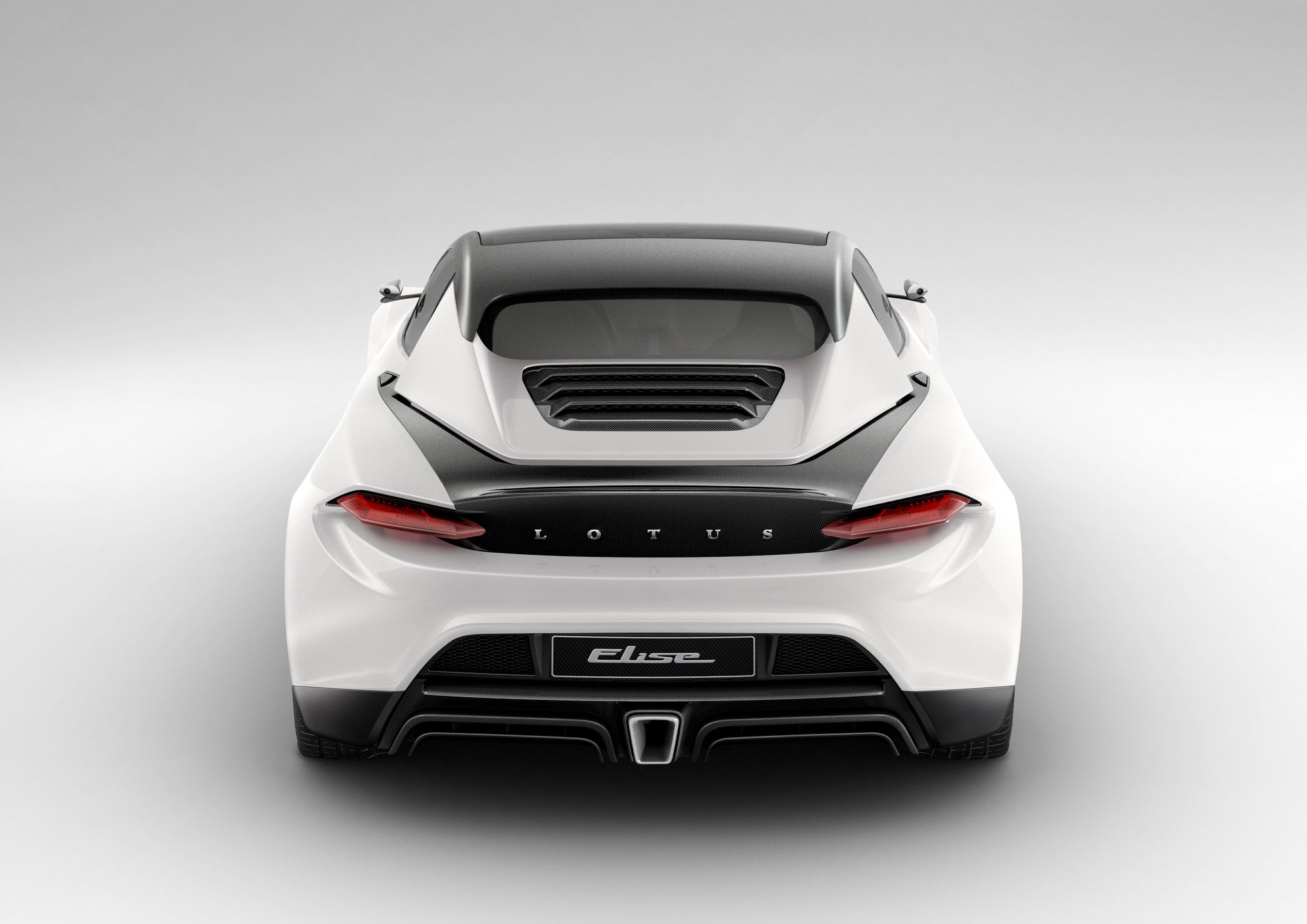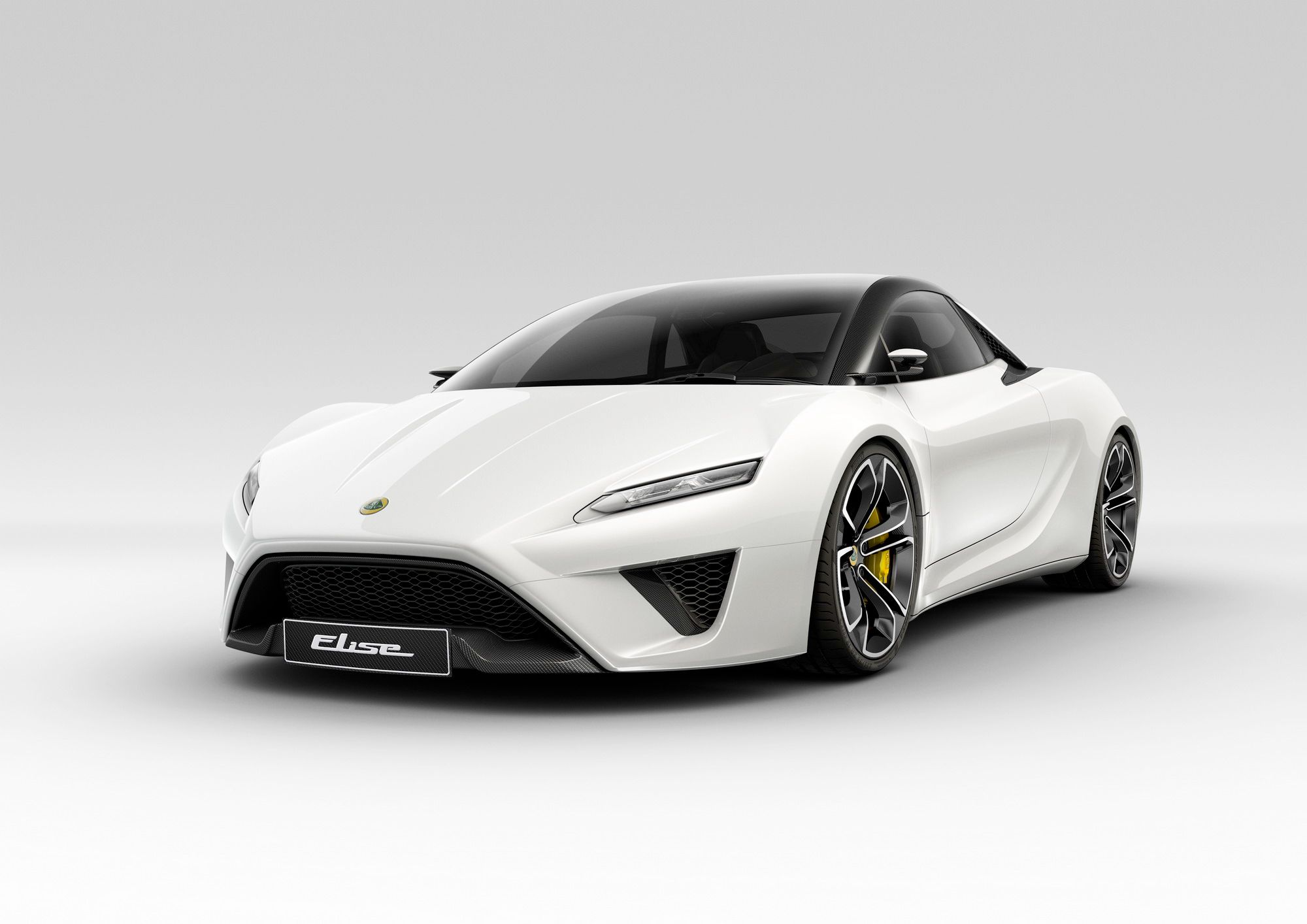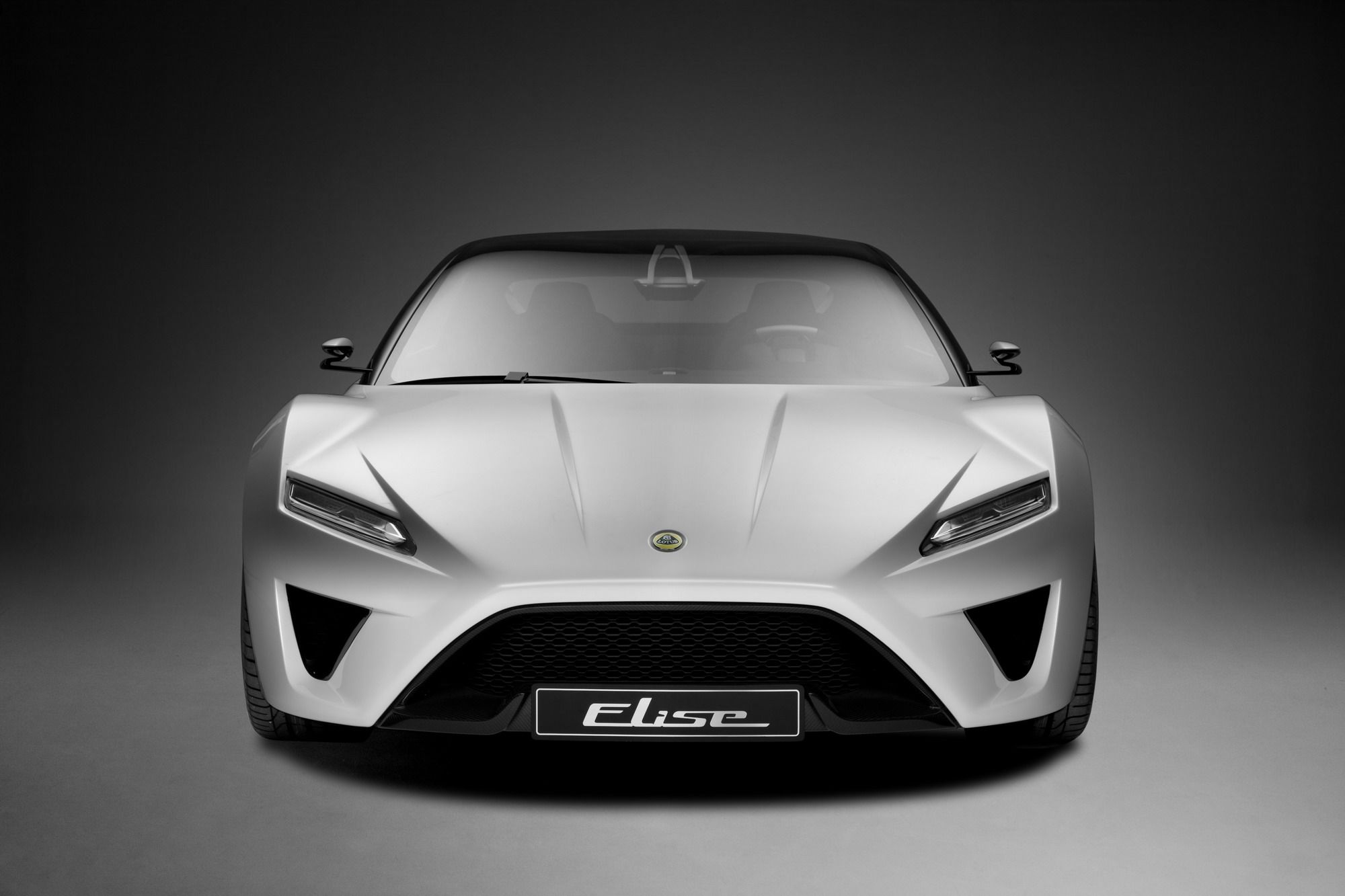Sold off to several companies after Colin Chapman's death in 1982, including General Motors, Lotus->ke49 ended up under Proton->ke4519 ownership in 1996. Although the British company was still struggling to rebound following two decades of financial hardship, the stability that came with the Proton purchase allowed Lotus to consider redesigning its sports car lineup. Launched in 1996, the Elise->ke1678 was more than 10 years old by 2010 and the company was hoping to offer a redesigned model in 2015. To preview what was supposed to become the Elise Series 4, Lotus introduced the Elise 2015 Concept at the 2010 Geneva Motor Show->ke228.
Compared to the then-new Series 3 production Elise launched for 2011, the concept was a radical departure styling wise and had a brand-new engine behind the rear seats. It also showcased technology previously unavailable in a Lotus, such as stop/start. On the other hand, the more modern technology made the Elise Concept significantly heavier than the existing model, which made purists rightfully unhappy about the transformation.
Fortunately for them, but obviously unfortunately for the company, the concept sports car never made it into production as Lotus continued to struggle financially and nearly went bankrupt in 2013. The Elise Series 3 soldiered on until 2016 with minor changes and it's still waiting to get a makeover, which will most likely happen in 2017. With the concept already six years old as of 2016, it's safe to assume that Lotus no longer wants to put it in production, but it's a vehicle that deserves some attention for its polarizing design. Also, it's a good way to understand how Lotus viewed the sports car market back in 2010.
Continue reading to learn more about the Lotus Elise Concept.
2010 Lotus Elise Concept
- Make: Array
- Model: 2010 Lotus Elise Concept
- [do not use] Vehicle Model: Array
Exterior
Featuring sharp lines, a low stance, and slender headlamps and taillights, the Elise Concept had nothing in common with the production model it was supposed to release. Its styling harked back to the first-generation Esprit of the wedge car design era and at the time of its released preview Lotus' new design direction. The rounded bumper intake seen on previous cars was replaced by a trapezoidal-shaped opening flanked by side vents for brake cooling. The V-shaped front hood and the thin headlamps gave it a more modern and aggressive appearance.
The sculpted rear fenders of the production car were kept on the concept too, but the side intakes were removed. Instead, Lotus added two smaller vents in the C-pillars. The wavy beltline made the car seem wider, while the carbon-fiber roof and side mirrors, and the concave wheels gave it a high-tech feel that other Lotus vehicle didn't have.
The rear section was also new compared to the production Elise, but the bumper and the center section of the fascia remained familiar. Slim, one-piece taillights replaced the quad round units, while the diffuser had a race-inspired design. The engine hood with the flying buttresses and grille cover paid homage to classic Lotus models of the 1960s and 1970s.
Interior
The interior of the Elise Concept was also high-tech compared to the production model, featuring huge amounts of carbon-fiber and aluminum. The overall design was spartan, a Lotus trademark, but the traditional instrument cluster was replaced with a fully digital unit. The center console was inspired from racing and featured only a handful of buttons, with most control positioned on the steering wheel. The dashboard ran into the door panels to form a wrap-around design. The black, gray and silver colors of the interior were highlighted by golden inserts, while the seats featured tartan surfaces in a nod to the original Esprit.
Drivetrain
The Elise Concept was presented with a brand-new, supercharged 2.0-liter four-cylinder engine. Larger than the Toyota-sourced 1.8-liter unit offered in the production Elise, the unit was also significantly more powerful, being estimated to generate 320 PS and 330 Nm of torque (315 horsepower and 243 pound-feet). The update was significant compared with the Series 3 model that debuted in 2010 with 217 horses.
Lotus claimed that the production model based on the concept should hit 62 mph in 4.3 seconds and accelerate up to a top speed of 270 km/h (168 mph). Not bad for a Lotus that tipped the scales at 1,095 kg (2,414 pounds). For reference, the heaviest Series 3 model weighed only 914 kg (2,015 pounds).
The engine had stop/start technology and was supposed to mate to either a six-speed manual or a dual-clutch transmission. Lotus also estimated carbon-dioxide emissions of only 150 g/km. It might not seem like much in 2016, but it was pretty impressive for a sports car back in 2010.
Conclusion
When it was presented in 2010, the Elise Concept 2015 left many enthusiasts impressed. The design was fantastic, the interior was true to Lotus' heritage, while the new engine promised significant improvements in terms of output and performance. The new Elise was also supposed to be the most fuel-efficient and less-polluting Lotus. The company even went as far as to say that the upcoming model will be "class-leading in terms of performance and efficiency," a bold claim that the Brits never got the chance to put into practice. The sluggish sales and the brand's financial problems between 2011 and 2013 not only postponed the project, but killed it altogether. It's a shame that the Elise 2015 never saw the light of day, but on the other hand it gave Lotus the opportunity to further develop the Series 3, which is nothing to sneeze at in 2016, even when pitted against the Porsche 718 Boxster/Cayman. Hopefully Lotus learned a few things while developing the Elise Concept and will use that knowledge to deliver an impressive next-generation sports car.


